Super User
Brazilian terminal orders three new Konecranes Generation 6 Mobile Harbor Cranes to increase capacity, competitiveness
Konecranes has won an order to deliver three of its new eco-efficient Generation 6 Konecranes Gottwald cranes to Super Terminais Comercio e Industria Ltda (Super Terminais) in Brazil. The order, booked in June 2021, makes Super Terminais the first customer for the new cranes, and will help it sustainably meet growing demand for containers and general cargo in the Port of Manaus.
- Contract marks first order for new, revamped Konecranes Gottwald’s mobile harbor crane portfolio
- New Generation 6 is engineered for electric power and can run on battery power, cutting fuel and maintenance costs and helping customers meet their low-carbon targets
Super Terminais, a new customer for Konecranes, needs the extra lifting capacity to handle the megaships in use today at Manaus, an important commercial center and transport hub for the upper Amazon basin. The ESP.10 cranes are the largest models in the new Generation 6 portfolio and will be built on a new floating pier which can accommodate a recent influx of larger vessels coming down the Amazon River.
“Konecranes has been able to provide us with a specially tailored, holistic solution consisting of reliable, high-performance cranes that fit perfectly onto our unusual quay,” says Marcello Di Gregorio, Managing Director of Super Terminais. “This equipment will significantly expand our capacity and give opportunities for future growth and development. The choice of this equipment brought the perfect solution that goes in line with our philosophy of environmental preservation and sustainability, uniting productivity, technology and reliability.”
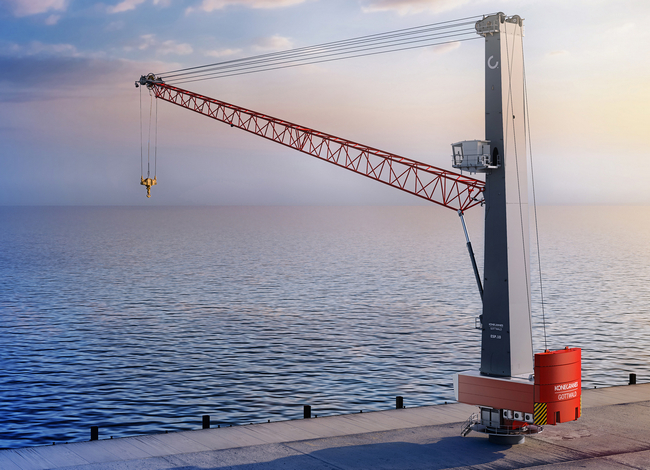
“We consulted closely with Super Terminais, and our new Generation 6 electric cranes overcame the special challenges that a hot climate and the floating pier presented us. This demonstrates the importance of a solid partnering relationship with customers and the flexibility of our equipment in a range of applications and working environments,” says Andreas Moeller, Senior Sales Manager, Mobile Harbor Cranes, for Konecranes Port Solutions.
The cranes will be connected to an external power supply on shore, to increase efficiency and fully comply with regional emission standards. Electric cranes provide comprehensive lifting solutions that support customers in helping them to move closer to their low-carbon targets. Konecranes calls this Ecolifting. You can read more on the new Generation 6 here.
A strong focus on customers and commitment to business growth and continuous improvement make Konecranes a lifting industry leader. This is underpinned by investments in digitalization and technology, plus our work to make material flows more efficient with solutions that decarbonize the economy and advance circularity and safety.
Konecranes is a world-leading group of Lifting Businesses™, serving a broad range of customers, including manufacturing and process industries, shipyards, ports and terminals. Konecranes provides productivity enhancing lifting solutions as well as services for lifting equipment of all makes. In 2020, Group sales totaled EUR 3.2 billion. The Group has around 16,500 employees in 50 countries. Konecranes shares are listed on the Nasdaq Helsinki (symbol: KCR).
Three steps to heat transfer fluid regulatory compliance
According to statistics from The Home Office, Fire and Rescue services in the UK attended 14,308 fires in non-dwelling buildings in 2020. The effects of fires in the workplace can be devastating, causing injury as well as significant damage to property and the surrounding environment. However, most fires are preventable when employers implement the correct preventative measures. Here Clive Jones, managing director of thermal fluid specialist Global Heat Transfer, outlines the three key steps to managing thermal fluids in accordance with regulations.
Any facility that uses heat transfer systems containing thermal fluid must proactively maintain them to mitigate for potential risks associated with explosive atmospheres in the workplace. These atmospheres can be caused by dangerous substances like flammable gases, mists or vapours, or by combustible dust — if any of these mix with air under atmospheric conditions, they can ignite and cause significant damage.
Thermal fluids are heated to very high temperatures for extended periods of time, so if they are not properly managed, they will begin to degrade. As they degrade, the bindings of hydrocarbon chains will begin to break, causing the flash point, the minimum temperature at which a fluid’s vapours will ignite in the presence of an ignition source, to decrease. If fluid condition continues to deteriorate and the system is not regularly maintained, it can increase the risk of fire.
For example, if degraded fluid is leaking from the system, the hydrocarbons produced during degradation are released as vapours, known as volatile light ends. Leaks can also produce a spray of fine material — the greater the pressure, the higher the risk.
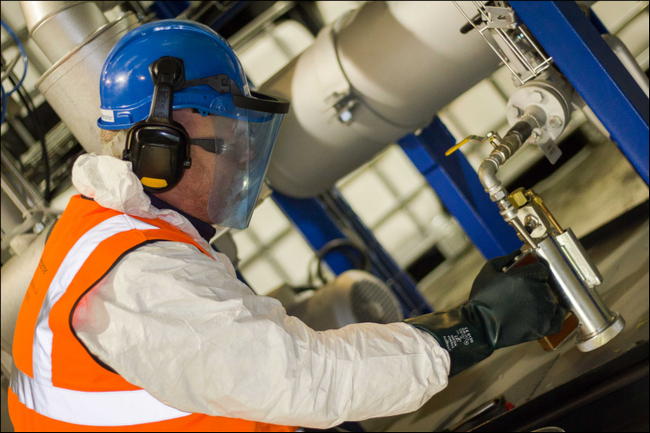
Regulations explained
The Dangerous Substances and Explosive Atmospheres Regulations (DSEAR) of 2002 and the Explosive Atmosphere Directive (ATEX 137) are mandatory requirements for minimising safety risks and protecting workers from fire and explosion where flammable or explosive materials are present.
This legislation sets out the legal requirement for thermal fluid systems and representative fluid analysis and requires that employers provide a safe working environment. Employers have a legal obligation to comply with this legislation and maintain documentary evidence.
Managed risk
New thermal fluid does not go from being fit for use to needing replacement overnight, but it will degrade over time and create by-products that reduce the efficiency of the system.
Closely monitoring thermal fluid condition is key to reducing the risk of fire in facilities. Engineers should take a sample when the system is hot, closed and circulating to gain an accurate representation of what is happening inside the system. Engineers can use the analysed samples to monitor flash point temperature, intervening if the temperature lowers.
Installing a remote condition monitoring system alongside regular sampling enables manufacturers to monitor and manage fluid condition more closely. For example, Thermocare® 24/7 Live Condition Monitoring is a cloud-based remote monitoring system that continually monitors fluid condition, sharing real-time data with the cloud. The platform can determine the presence of degradation factors and warn maintenance personnel with an alert to smart devices if it detects anomalies.
Safe site
Under DSEAR legislation, employers must carry out regular risk assessments of any work activities involving dangerous substances, like thermal fluids, and implement measures to eliminate these risks.
A system audit and survey includes a thermal fluid and system risk assessment to check the condition of different system components like the heaters and pumps, storage and dump tanks and insulation. Auditors will also carry out fluid analysis and check maintenance and training procedures, making any recommendations to improve these areas and ensure compliance.
Knowledgeable staff
Staff will have varying degrees of knowledge of heat transfer systems, with some having operated steam versions before and others never having encountered a heat transfer system at all.
Plant managers should ensure that the facility always has members of staff available on site that have been trained in thermal fluid systems and fluid management to ensure site and staff safety. Training should cover the basic system operations, like start-up and shut down procedures. Training should also include a comprehensive list of what maintenance staff should check on a regular basis, including potential leaks, wear and tear, faulty gauges, heat and flow. If manufacturers don’t want to handle the training themselves, they can outsource it to a thermal fluid expert.
Although businesses cannot predict whether fires will occur, they can take preventative measures to minimise risk. Thorough training, site safety procedures and regular thermal fluid analysis ensures that facilities with heat transfer systems have taken all the steps required to comply with DSEAR legislation and make employees feel safe.
For more advice on regulatory compliance when working with heat transfer fluids, contact Global Heat Transfer by calling +44 (0)1785 760 555 or visiting www.globalhtf.com/contact.
About Global Heat Transfer: Global Heat Transfer is a thermal fluid specialist, providing heat transfer engineering assistance and thermal fluid supplies. Services offered include sampling and analysis, 24 hour delivery of premium quality thermal fluids, system drain down / cleaning / waste management, planned maintenance programs and a broad portfolio of affiliated system design and installation services. It is part of the Global Group of companies.
Metso Outotec and Ascendum Makina to cooperate in Turkey
Metso Outotec and Ascendum Makina Tic A.S. have started the cooperation to provide crushing and screening solutions for companies in the aggregate industry in Turkey. As of August 2021, Ascendum will sell Metso Outotec’s mobile and stationary crushers, vibrating equipment, and track- and wheel-mounted crushers and screens for aggregate processing. In addition, Ascendum will provide related Metso Outotec’s crusher wear parts and provide services, such as commissioning, service contracts and technical support.
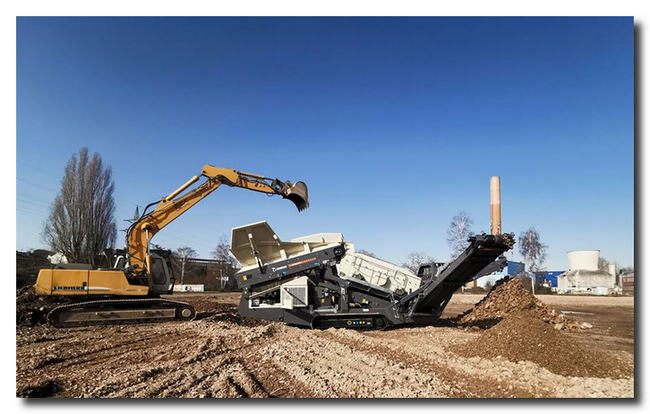 Metso Outotec Nordtrack S25 jobsite
Metso Outotec Nordtrack S25 jobsite
“Ascendum has a strong reputation in providing earth moving equipment and services,” says Olli-Pekka Oksanen, Senior Vice President, Distribution Management Office at Metso Outotec. “We expect that the cooperation enables us to reach out to new aggregate crushing and screening customers more efficiently, as well as to provide our existing customers with faster access to parts, support and services.”
“The cooperation broadens our aggregate crushing and screening product offering,” says Mahir Hocaoglu, the CEO of Ascendum Makina. “Metso Outotec is a premium brand, and combined with our dedicated local expertise, our aim is to increase the customer satisfaction and to continue to be the preferred choice what it comes to aggregate crushing and screening solutions.”
Ascendum Makina Tic. A.S. is a Turkish distributor of equipment and services that are used in infrastructure projects, road construction projects, construction, and mining sectors. They have three main branches and three sub-dealer locations around Turkey with more than 600 employees. Read more at: http://www.ascendum.com.tr/
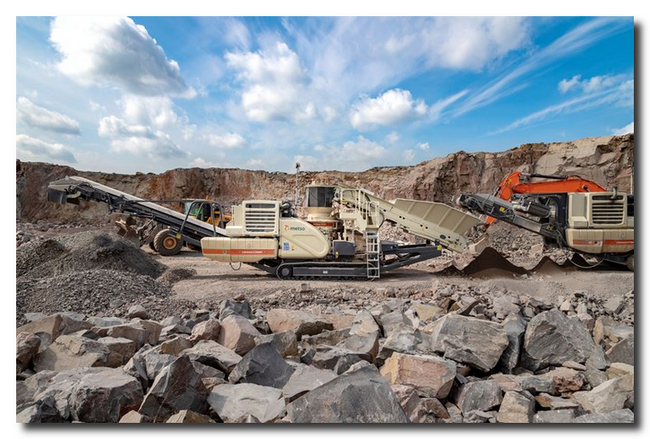 Metso-Outotec-Lokotrack-LT200HP-2018
Metso-Outotec-Lokotrack-LT200HP-2018
Metso Outotec is a frontrunner in sustainable technologies, end-to-end solutions and services for the aggregates, minerals processing and metals refining industries globally. By improving our customers’ energy and water efficiency, increasing their productivity, and reducing environmental risks with our product and process expertise, we are the partner for positive change.
Metso Outotec is committed to limiting global warming to 1.5°C with Science Based Targets. We ranked 8th on the 2021 Global 100 list of the world’s most sustainable companies.
Headquartered in Helsinki, Finland, Metso Outotec employs over 15,000 people in more than 50 countries and its sales for 2020 were about EUR 3.9 billion. The company is listed on the Nasdaq Helsinki. mogroup.com
Strohm plans new TCP centre of excellence and office base in Brazil
Leading global composite pipe technology company Strohm has opened a new office in Rio de Janeiro and is establishing a centre of excellence for engineering its Thermoplastic Composite Pipe (TCP) technology as part of its growth strategy in South America.
Strohm is extending its footprint in Brazil and gearing up for the execution of a significant contract, which is expected to be announced soon. The company is aiming to hire an additional ten local people over the next twelve months to bolster the engineering and back-office support teams to further enhance business development opportunities.
Once the operation ramps up in the coming years, there are also plans to establish a local TCP manufacturing capability to better support the clients in the region.
Strohm’s TCP technology outperforms existing solutions in terms of durability, corrosion resistance and total installed cost. Further cost reductions are possible by capitalising on the knock-on effects of using TCP.
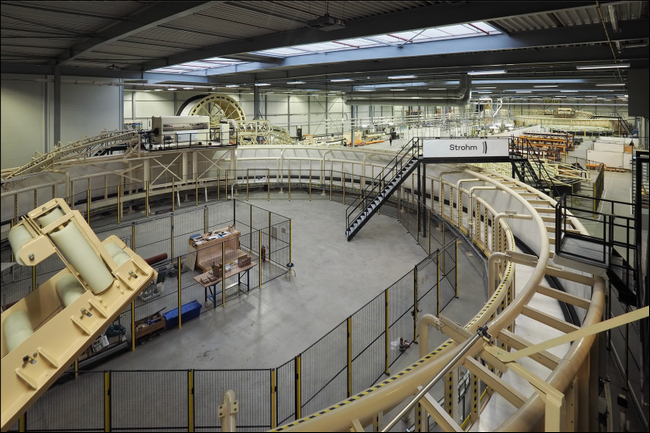 Strohm's facility in IJmuiden
Strohm's facility in IJmuiden
Renato Bastos, who has been Strohm’s vice president in Brazil for the past three years, will head up the Rio de Janeiro site. He has over 20 years’ experience in the energy industry, with a strong background in the installation of steel and flexible pipes.
Mr Bastos said: “With Brazil’s ultra deepwater market ramping up and an increasing number of independent operators acquiring fields from Petrobras, we see opportunities both in the highly demanding pre-salt applications as well as with the independents on the mature fields.
“With this move, we are in a great position to take advantage of these opportunities. Our TCP is perfectly suited as it’s non-corrosive and robust, offering up to 60% reduced CO2 footprint compared to steel alternatives. It also has reduced installation costs as it is so lightweight.
“Establishing a new office in Rio as well as a new TCP engineering centre is an important stepping stone towards our long-term vison of designing and manufacturing locally in Brazil. It also enables us to further pursue relevant research and development projects with the operators established in country, under Brazil’s National Agency of Petroleum framework, as well as demonstrates our commitment to our clients and the local economy.”
As a global leader in TCP, Strohm started a staircase qualification programme in 2018 for flowlines intended to be deployed in deep water Brazil.
Progressing on its roadmap towards ultra-deepwater dynamic applications in harsh environments, Strohm now sets up for the ultimate goal - the TCP Riser. Strohm's TCP Riser design delivers the lowest total installed cost solutions for such demanding applications, whilst offering maximum flexibility to operators in terms of subsea configuration and choice of installation method. The TCP Riser developed by Strohm optimises cost with minimum bend radius and weight, using only robust and field proven materials
The TCP Riser is installed using vessels currently available in the market, and as it does not require any buoyancy elements during installation, there is a significant reduction in costs and CO2 emissions.
As part of Strohm’s plans for expansion in Brazil, the company has also launched a Portuguese version of its website: https://strohm.eu/pt
About Strohm:
Leading composite pipe technology company Strohm (formerly Airborne Oil & Gas) has the world’s largest track-record for Thermoplastic Composite Pipe (TCP) after being the first to bring the technology to the Oil & Gas industry in 2007. TCP reduces total installed and life cycle cost for subsea flowlines, jumpers and risers and has proven to reduce the CO2 footprint of pipeline infrastructures by more than 50%.
The company is committed to driving sustainability with its range of TCP solutions which enable clients towards their net-zero carbon emissions targets and supports the renewables sector.
TCP is a strong, non-corrosive, spoolable, lightweight technology which is delivered in long lengths, resulting in a significant reduction of transportation and installation costs. TCP is installed using small vessels or subsea pallets, significantly reducing CO2 emissions. It is also 100% recyclable.
Strohm’s shareholders are Aker Solutions, Chevron Technology Ventures, Evonik Venture Capital, Saudi Aramco Energy Ventures, Shell Ventures, Subsea 7, Sumitomo Corporation and the private equity investor, HPE Growth.
The firm’s manufacturing facility is located at its headquarters in IJmuiden in The Netherlands. Strohm also has offices in Houston (US), Rio de Janeiro (Brazil) and Kuala Lumpur (Malaysia).
Visit the Strohm website here
Oil price trajectory: Tug of war between supply constraints and weak demand outlook
Locked in a tussle between slackened demand and supply shortages, oil prices have exhibited a sinusoidal trend over the past few days, rendering future price projections hazy for the black gold. The impact of opposing forces has led to rapid shifts in the price trajectory of crude prices.
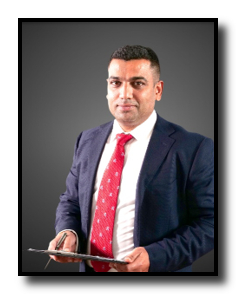 Kunal Sawhney: Entrepreneur with revolutionary ideas; financial professional with wealth of knowledge in Equities, aiming to transform the delivery of equity research through tech-driven digital platformsInitially backed by expectations of rising future demand, oil prices are seen to be under substantial pressure in recent days. Oil prices recently marked their longest losing streak since February 2020 as increasing virus cases worldwide fuelled fears over slower demand for fuel. A surprise build in the American gasoline inventories in the week to Aug 13 also ignited concerns over decelerating fuel demand, putting pressure on oil prices.
Kunal Sawhney: Entrepreneur with revolutionary ideas; financial professional with wealth of knowledge in Equities, aiming to transform the delivery of equity research through tech-driven digital platformsInitially backed by expectations of rising future demand, oil prices are seen to be under substantial pressure in recent days. Oil prices recently marked their longest losing streak since February 2020 as increasing virus cases worldwide fuelled fears over slower demand for fuel. A surprise build in the American gasoline inventories in the week to Aug 13 also ignited concerns over decelerating fuel demand, putting pressure on oil prices.
The recent downtrend in oil prices started with the Biden administration’s plea with OPEC and its allies to simmer down oil prices by increasing production and providing some respite to the subsequently caused inflationary pressures. However, oil prices initially recovered from this pullback after OPEC+ members uncovered their intentions of keeping oil production intact as per their set plan for the coming months. The Biden government’s botched attempt to bargain with OPEC made the largest oil consumer appear vulnerable to rising oil prices.
But surging COVID-19 cases across the globe have further complicated the scenario, putting downward pressure on the oil prices while hitting the demand outlook.
GOOD READ: Crude oil marks worst run in four months as COVID-19 hits demand outlook
Weak demand in the Asia-Pacific region
China, being one of the biggest consumers of oil in the world, has significantly dropped its oil intake following the rapid spread of the Delta variant in the country. The daily crude processing for China plummeted to its lowest level since May 2020 in July this year. The significant drop in numbers was fueled by the implementation of tighter quotas, along with rising inventories and reducing profits.
Moreover, the Delta variant wave has not been friendly to the Chinese economy as the country’s retail sales and factory output data showed a significant slowdown in July. One can say that China’s battle with the new variant has disrupted the country’s businesses while overturning its economy from the position of recovery.
A similar trend is being observed in other countries across the globe. The Delta variant has successfully wreaked havoc in Japan, where a spike in cases has taken a massive toll on the healthcare system, putting outdoor activity at a standstill. Even in New Zealand, a strict lockdown has been imposed after the first COVID case emerged in the country in six months.
All in all, the growing spread of the Delta variant has sparked concerns of weakening global demand, which has been driving oil price movement over recent days. However, a group of analysts still believes that the demand-supply balance will continue to tighten in the coming months at a time when OECD commercial crude oil stocks have already plunged to pre-coronavirus levels.
GOOD READ: APAC markets fall as regulatory fears resurface in Hong Kong
What lies ahead for the oil market?
Be it for its feasibility as a cheaper alternative to sustainable energy generation or its high linkage to the US dollar, crude oil has remained an important resource for the US for years. However, the recent drop in global fuel demand appears to have trumped the substantially high Western demand for the liquid, causing an ultimate decline in prices.
In the coming months, the US’ current demand for increased oil production might become a topic of heated discussion when measured against the country’s global commitments towards climate change. The country’s call has already flagged concerns about the viability of its climate change measures and proven the dependence of one of the largest economies in the world on crude oil.
In terms of oil demand, a bearish projection has been recently shared by International Energy Agency (IEA) where it expects demand to remain subdued in the coming months. Coupled with OPEC’s latest stance to keep supply unchanged, the scenario makes for a unique predicament where oil prices see uncertainty looming ahead. However, only time will tell if the global recovery from the Delta variant would revive commodity prices or slackened demand will continue to pull the breaks on oil prices for the long haul.
Qdos® CWT™pump delivers major advance in long-life chemical metering
Watson-Marlow Fluid Technology Group (WMFTG) is unveiling the next performance level in its range of industry-leading Qdos chemical metering pumps. Qdos® Conveying Wave Technology (CWT™) extends the capabilities of peristaltic pump technology and offers longer service life than traditional tube-based designs. CWT™ also offers important advantages in water treatment applications; users will benefit from superior accuracy in chemical metering and dosing tasks, and the elimination of expensive ancillary equipment.
Qdos® CWT™ pumps achieve their peristaltic action by operating a unique fluid contact element that, in effect, offers the same basic function as the tube of a conventional peristaltic pump. As well as the elimination of vapour locking, the element delivers stable, reliable performance, even with fluctuations in ambient temperature and pressure. Furthermore, the robust mechanical design provides consistently high accuracy for the life of the pump.
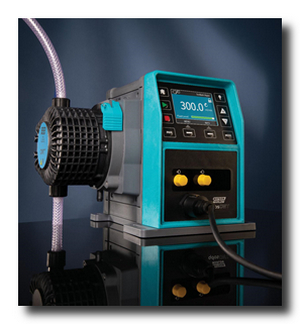 Longer service life
Longer service life
To achieve the peristaltic pumping action, the CWT pumphead incorporates an EPDM element rather than a tube, which acts against a PEEK track. The resulting fluid contact element is subjected to very low stress levels, meaning the Qdos CWT pump will deliver significantly longer service life than a traditional pump.
Qdos CWT pumps offer outstanding chemical dosing accuracy in water treatment applications. The pumps introduce chemicals – including sodium hypochlorite for post-chlorination cycles – without the need to overdose, thus delivering consistently high accuracy for the life of the pump.
Positive user feedback
Among the pilot sites able to provide testimony is the San Luis Rey Water Reclamation Facility in Oceanside, California. The facility, which collects, treats and disposes of all of the city's sewage, favours the use of peristaltic pumps over diaphragm pumps for their ability to handle off gassing chemicals such as sodium hypochlorite. The installation of the Qdos CWT pump has enabled the site’s engineers to use peristaltic technology in an application where pressure spikes and off gassing affected more traditional pump types. Since installation the San Luis Rey facility has experienced a significant increase in pump life.
The sealed CWT pumphead – which delivers accurate, linear and repeatable flow – is also highly safe as it minimises operator exposure to chemicals, while changeover is possible in less than a minute without the need for tools. Qdos CWT users can gain from further operational and environmental safety through leak detection software, failure alarms and fluid recovery capabilities that avoid chemical waste.
Usability and control
From a usability perspective, the pump features a high-visibility keypad and TFT display, along with direct connectivity capability to a range of external monitoring systems.
“This is an exciting launch for us,” says Martin Johnston Strategic Business Development Director at WMFTG. “Qdos CWT is the next level in high performance for our industry leading Qdos® range of chemical metering pumps. Our objective was to design a technology that delivers all the benefits of a traditional pump but with significantly longer service life than traditional tube designs. It’s clear from early user feedback that CWT will help to deliver operational efficiencies to a wide range of users. We look forward to introducing more of our customers to its benefits.”
Like all pumps in the range, the Qdos CWT is available in a number of variants that provide different levels of control, from Manual, Remote and PROFIBUS, through to Universal (automatic and manual control) and Universal+ (automatic and manual control with configurable 4-20mA input and output).
The new Qdos CWT range offers flow rates from 0.1 to 500 ml/min, and up to 7 bar RMS pressure. Flow control is up to 5000:1 with ±1% accuracy. To ensure suitability for industrial environments, the Qdos CWT features an IP66 NEMA 4X rated casing. A three year warranty is standard.
Launching Qdos CWT for chemical metering in the industrial sector marks only the beginning, as plans are already afoot to help a myriad of other applications enjoy the benefits available.
About Watson-Marlow:
Watson-Marlow Fluid Technology Group (WMFTG) is the world leader in peristaltic pumps and associated fluid path technologies. The Group comprises ten established brands, each with their own area of expertise. Together they provide leading engineering solutions across the food, pharmaceutical, chemical and environmental industries.
WMFTG is headquartered in Falmouth, UK with international operations in 44 countries and employing over 1750 people globally.
Watson-Marlow is a wholly owned subsidiary of multi-national industrial engineering Group, Spirax-Sarco Engineering plc, a constituent of the FTSE 100, with strategically located manufacturing plants around the world and almost 8,000 employees, including 1,900 direct sales and service engineers.
As a leading engineering group, we have an ethical responsibility to manage our economic, environmental and social impacts, while helping our customers and suppliers to do the same. In August this year, WMFTG committed to achieving carbon neutrality by 2040.
Further information can be found at www.wmftg.com
Making smart grids possible
Distribution automation for a failproof, diversified energy grid
In July 2021, the European Commission announced new ambitious targets for green energy. By 2030, 40 per cent of all the energy consumed in Europe should be generated renewably. While this is great for the planet, it adds another layer of complexity to energy grid management. The solution? Smart grids. Here, Johan van der Veen, an account manager specialising in energy at remote monitoring and control expert Ovarro, explains how distribution automation makes smart grids possible.
With rapid diversification and rising customer demand, these are challenging times for grid managers. The transition to solar, wind, and wave power means that energy production is as changeable as the weather — quite literally. This is compounded by growing demand for energy thanks to electric vehicles (EVs) and electric heating.
As a result, the energy distribution landscape is changing. Rather than the traditional top-down structure of one producer to many customers, now there is a shifting dynamic of energy being fed back and forth as usage peaks and troughs.
But, if supply and demand don’t align, it can lead to higher rate of power loss or unavailability incidents. Nobody wants a power failure, especially with heavy fines and public opinion on the line.
All this means that energy grids need to work harder and, without huge amounts of investment in extra infrastructure, the easiest way to achieve this is to make them more efficient — smarter, even. Datawatt, now part of Ovarro, has been working on making grids smarter since 1977 — well before the term smart grid even existed — with distribution automation technologies.

Work smarter not harder
Distribution automation covers the final part of the energy network, between the last station and customers’ homes and businesses. While in the past this section of the grid has been unmanaged apart from meters, recent years have seen a trend towards extending monitoring and control activities to this low voltage side.
Smart grids rely on monitoring equipment to collect data and analyse it. All this information can be used to predict problems, or identify them quickly once they do occur, helping grid operators take preventative or remedial action.
In layman’s terms, an electricity grid is like a chain of cables — a failure in one link means the whole chain doesn’t work. Smart grids can automatically identify and isolate the fault location, remotely switching gear so customers are supplied from another part of the grid.
Previously, grid engineers would have had to drive between distribution stations until they found the one with the fault. Smart grids with remote monitoring capabilities streamline this task so that maintenance teams can go directly to the source of the problem, reducing outage duration.
Solutions for smart grids
Ovarro offers remote monitoring and supervisory control and data acquisition (SCADA) systems designed for distribution grids. The Datawatt Smart Grid (DSG) series of remote telemetry units (RTUs) operates with flexibility and security in mind, adhering to European Network for Cyber Security (ENCS) security standards. The DSG operates on Linux, the modern open-source platform known for reliability and stability.
Ovarro RTUs like the DSG collect and manage data, before making it available to other systems for processing and analysing. As well as RTUs, Ovarro assembles cabinets that include a combination of its own products and third party hardware, offering complete solutions that are quick and easy to install in the field.
For smaller operators, there’s the Datawatt Stream webscada, a central system and web portal that collects data in real-time and makes it immediately available on digital devices. Ideal for controlling different locations and processes, this easy to use system ensures worry-free management and maintenance. Furthermore, the data can also be imported into the customer’s central system, so everything is available in one place.
It’s access to data that makes grids smart. Therefore, RTUs and SCADA systems are the building blocks of modern smart grids, collecting and analysing the large amounts of process data necessary for faster, and better, decision making.
As the energy sector comes to rely more heavily on renewable energy generation, in accordance with European climate targets, more effective distribution management will become essential. Automation offers one solution, with RTUs like the DSG series able to collect, analyse and act on data, helping to prevent power outages and resolve any faults quickly.
For more information on remote monitoring for energy grids, head to Ovarro’s website.
About Ovarro
Ovarro is the new name for Servelec Technologies and Primayer, and it hasrecently taken over the companies Datawatt BV and ControlPoint Ltd. Ovarro's technology is used throughout the world to monitor, control and manage critical and national infrastructure.
Our connected technology is always there, always on. Secure, proven, trusted; integrating seamlessly with our clients’ assets. Collecting and communicating data from some of the most remote locations and harshest environments on the planet. Enabling businesses to work smarter and more effectively.
Ovarro works with customers across water, oil & gas, broadcast and transportation to help monitor, control and manage their assets.
TotalEnergies to introduce a 100% renewable fuel at the 24 Hours of Le Mans and at the FIA World Endurance Championship (WEC)
TotalEnergies is developing a 100% renewable fuel for motorsport competition, to be introduced from next season at the FIA World Endurance Championship (WEC), including the 24 Hours of Le Mans 2022, and at the European Le Mans Series (ELMS).
Competition is a key driver for innovation: the extreme constraints met in endurance racing –race duration and high mileage- are constantly pushing for the development of higher-performance fuels, which however must also address nowadays the new challenges posed by the energy and environmental transition.
This 100% renewable fuel to be offered by TotalEnergies will be produced on bioethanol basis*, made from wine residues from the French agricultural industry, and from ETBE produced at TotalEnergies' Feyzin refinery near Lyon (France) from feedstock also sourced from by the circular economy. This fuel should allow an immediate reduction of at least 65% of the racing cars’ CO2 emissions.
Named “Excellium Racing 100”, this fuel opens a new chapter in the Endurance racing and motorsport energy transition for all the actors involved. It will have all the required qualities for a racing fuel and will meet automakers' requirements, as well as the latest FIA criteria for sustainable fuels, by leveraging the expertise of TotalEnergies Additives and Fuels Solutions. This team has notably designed “Excellium Endurance”, the fuel used this year for the 24 Hours of Le Mans 2021 which already includes 10% of advanced bioethanol.
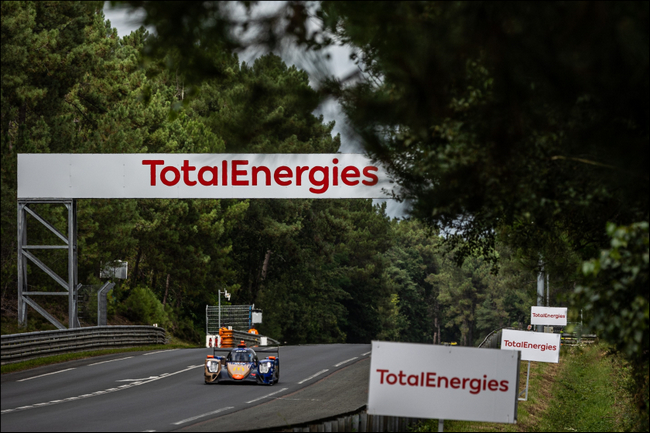
"Our ambition is to be a major player in the energy transition and to get to net zero carbon emissions by 2050, together with society," declared Patrick Pouyanné, Chairman and CEO of TotalEnergies. "TotalEnergies is supporting its customers and partners in their evolutions, by thus applying its strategy to motorsport: sustainable liquid fuels, electricity, batteries, hybridization, hydrogen... Advanced biofuels have an undeniable part to play in helping the transport sector to reduce its CO2 emissions immediately. This 100% renewable fuel, that will be made available in motor racing as soon as 2022, is a perfect illustration. As we are becoming a broad energy company, the racing track is more than ever an open-air laboratory for TotalEnergies."
Jean Todt, FIA President, said: “Endurance racing, by its nature, has always served as an excellent research and development platform and it is an important milestone to have the FIA World Endurance Championship switching to 100% sustainable fuel. It’s FIA’s major goal to implement sustainable energy sources across its portfolio of motor sport disciplines, thus paving the way in the reduction of CO₂ emission, perfectly reflecting our race-to-road strategy as well as the FIA’s PurposeDriven movement.”
Pierre Fillon, President of the Automobile Club de l’Ouest said: “Increasing awareness of social and environmental matters over the last few years has led the motor racing world to
focus deeply on these issues. The 24 Hours of Le Mans has been an experimental playground for innovation ever since the first race in 1923 and this exciting new development is in perfect continuity with our founding principles. Our long-standing partner TotalEnergies channels its expertise into developing sustainable solutions. This new, fully renewable fuel is testament to our wholehearted commitment to CSR. When it comes to sustainable development, we continue to step up to the bar, delivering our promise to play our part in sustainable mobility.”
Frédéric Lequien, FIA WEC & ELMS CEO, commented: “It is extremely encouraging that TotalEnergies is paving the way for others and creating a 100% renewable fuel. I firmly believe that the WEC and ELMS are the ideal playground for TotalEnergies in order to trial its new innovative Excellium Racing 100 fuel. Endurance racing is the ultimate test for all road-related products and we are delighted that TotalEnergies has chosen our championships and Le Mans to help launch this cutting-edge new creation.”
Since 2018, TotalEnergies is the partner and official fuel supplier of the Automobile Club de l’Ouest (A.C.O.), creator and organizer of the 24 Hours of Le Mans. TotalEnergies share common values with the ACO : pioneering spirit and taste for performance. Since their beginning, the 24 Hours of Le Mans are a laboratory for automotive development : security, evolution of motorizations and fuels, aerodynamism, fuels consumption reduction, hybridation…
The forthcoming introduction of a 100% renewable fuel will complete this partnership between TotalEnergies and the ACO in the promotion of new energies. Hydrogen partner of the ACO the H24 Racing team, TotalEnergies a designed and build the first mobile hydrogen filling station, to support Mission H24 in the competition it is engaged in.
- This bioethanol or advanced ethanol is an agricultural by-product. It is made from residues from the wine industry, such as wine lees and grape pomace. Following several steps (industrial fermentation, distillation then dehydration), this base is then blended with ETBE (Ethyl Tertio Butyl Ether), itself a byproduct made from ethanol, and with several performance additives issued from the Excellium technology developed by TotalEnergies.
About TotalEnergies
TotalEnergies is a broad energy company that produces and markets energies on a global scale: oil and biofuels, natural gas and green gases, renewables and electricity. Our 105,000 employees are committed to energy that is ever more affordable, clean, reliable and accessible to as many people as possible. Active in more than 130 countries, TotalEnergies puts sustainable development in all its dimensions at the heart of its projects and operations to contribute to the well-being of people.
New Screen and Grit System solves tricky balancing act for Baldwin
New Screen and Grit System solves tricky balancing act for Baldwin
One would think that with a population of just 1,200 people, wastewater treatment in Baldwin, Michigan, would be pretty straightforward…
But for this village, it’s been a yo-yo of a journey for the past two decades, with treatment required for 75,000 gallons of sewage per day, right up to 200,000 gallons per day – and back down again – and at various levels in between. For any treatment plant operator, this has presented quite a challenge – and even now, it looks like flow could go back all the way down again to 75,000 gallons.
Rural Baldwin attracts plenty of visitors for its world-class trout fishing and canoeing (with the Pere Marquette River protected by The Wild and Scenic Rivers Act) - but the big differentials in population have been because of the North Lake Correctional Facility, which at capacity, has had 1600 inmates and up to 400 staff. Under the new Biden administration, it is expected to close – again – but time will tell.
In the late 1990’s the village of Baldwin brought in Grand Rapids-based Fishbeck (long-established engineers, architects, scientists and constructors) to design the original 75,000 gallons per day Sequencing Batch Reactor (SBR) plant, but as Jim Truxton, President of the Village of Baldwin, explains, construction was well underway when everything had to change with the building of North Lake Correctional Facility.
“At the time”, he said, “it was a unique opportunity for the state of Michigan to house the facility, and we couldn’t be blind to the fact that there would be significant Federal Government grants towards upscaling our wastewater treatment plant as a solid investment for the future of Baldwin”.
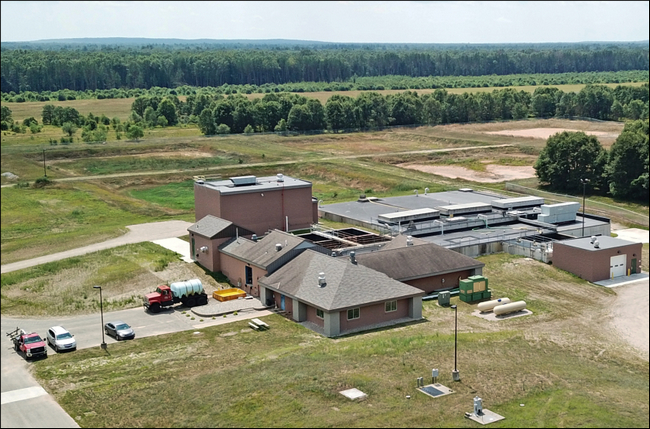 The wastewater treatment plant in Baldwin Michigan
The wastewater treatment plant in Baldwin Michigan
‘Took in waste from septage trucks’
He added: “Over the years, I doubt anyone could have foreseen the on/off, open/closed saga, but then, opinions and policies can change when new administrations are elected. During a long period of closure for North Lake – for around seven and half years - our treatment plant was running at only 30% capacity, so to generate some much-needed income, we took in waste from septage trucks. In this part of Michigan, there are a very large number of septage tanks, so we knew there was a strong demand”.
Waste from these septage vehicles went into a primary pump station – and was pumped via a nearly three-mile-long force main, which travels underneath both an abandoned railroad and wetlands area, prior to discharging at the wastewater treatment plant.
In early 2018, Fishbeck completed the design and bidding for an $8M expansion of the Wastewater Treatment Plant (including the upgrading of the primary pump station) – proceeding with building as construction managers.
“Prior to this”, continued Jim Truxton, “there just wasn’t enough flow to move the grit, so it accumulated in the force main”.
For the new headworks, Fishbeck and the Village of Baldwin chose a Raptor Micro Strainer Screen (with a ¼-inch diameter perforated plate screenings basket) and a SpiraGrit Vortex Grit System – both made by Lakeside Equipment Corporation of Bartlett, Illinois.
Dave Conklin, Senior Engineer at Fishbeck, said: “We help Baldwin with water supply, wastewater treatment, including regulatory requirements, planning and grant applications. We have previously specified Lakeside’s headworks equipment, based on its competitive pricing and performance. We have also had excellent experience with the manufacturer’s representative, Dubois Cooper of Plymouth, who are very knowledgeable and responsive. Both businesses were highly involved in the start-up of equipment – and any troubleshooting that was needed. They also organized good quality training, kept us up to date and provided meaningful warranties”.
The real fun began at Baldwin in March 2019 when as part of the upgrade, new, larger pumps were installed to help move the legacy of grit, which was estimated to be occupying around two thirds of the force main.
For Infrastructure Alternatives of Rockford, who professionally manage 130 wastewater treatment plants, Division Director, John Barthels, said: “Getting all this accumulated grit out of the line resulted in a huge amount of material for the Lakeside equipment to deal with – probably around six to ten times the normal amount. We knew from other treatment plants that Lakeside performs very well, but this was a big test. It certainly demonstrated its robustness”.
He added: “Historically, infrastructure in the US has been underfunded, so as operators we have to squeeze as much out of it as we can. With Lakeside though, which is high-end quality – and by working with equally trustworthy companies such as Dubois Cooper – and Fishbeck, we know that this is very long-lasting equipment”.
Over a wide range of daily flow rates, Lakeside’s SpiraGrit Vortex Grit System captures grit particles in the flat-floor circular upper grit chamber. Rotating paddles maintain the flow velocity inside the grit chamber, with grit removed from the storage hopper by a self-priming pump to a Raptor Dry Grit Washer. Organics are separated from the grit particles via the introduction of upwardly directed wash water and a grit stirrer assembly. The removed organics are automatically recycled back to the process. After removal of the organic material, the clean grit is removed via a grit dewatering screw and discharged into a dumpster.
In the headworks channel, Lakeside’s Raptor Micro Strainer Screen captures debris such as plastics, hygienic articles and fibers. A brush on the central screw cleans the screenings basket and conveys solids up to the compaction zone/dewatering chamber. After passing through the compaction zone, the dewatered solids enter a discharge chute which directs the solids into a dumpster at a lower level.
The screen and grit equipment were constructed from Type 316 stainless steel for superior corrosion resistance.
‘An amazing amount of grit’
Jim Truxton, President, Village of Baldwin, added: “There was an amazing amount of grit. For the first six months of the installation, a 10 cubic yard dumpster was filled to the brim - every week. Now that the process has settled down after that initial wave of grit, the whole thing works just fine. All that is required is some periodic cleaning and basic preventative maintenance”.
Lakeside’s Raptor Micro Strainer Screen and SpiraGrit Vortex Grit System are no strangers to large volumes of grit from septic tanks. At Indian River County’s Residuals Dewatering (Biosolids) Facility in Florida, the equipment successfully deals with wastes from commercial, industrial and municipal sources, as well as a huge volume of residential septic tank cleanings.
“One way or another, it’s been quite a journey”, said Jim Truxton. “With or without North Lake Correctional Facility, we now have a very professionally managed wastewater treatment plant with equipment that delivers excellent performance for the long-term. Plus, we have a team of highly skilled and conscientious professionals behind us all the way. With our groundwater discharge and close proximity to such a precious waterway as the Pere Marquette, we rightly have to be very careful with our treatment processes. If somebody pees in the river, the EPA are there before they’ve zipped their fly back up”.
mycon GmbH - operation near to zero waste
Efficient, fast, and energy-saving – the new mycon CoolMaster cooling process opens up new possibilities.
CoolMaster - the newest mycon device is used to partially cool components as an open or closed system. During long-term-use the operating materials can be completely processed so that they can be reused.
CoolMaster cools down surfaces to temperatures as low as -70°C quickly and efficiently. Partial cooling is also possible. Being able to reach such low temperatures quickly has advantages when cleaning contaminated surfaces and separating bonded parts, for example. The bond areas of the components are made brittle by the freezing temperatures, which enables easy separation.
Removal of a glued-in bronze bushing CoolMaster, mycon's new cooling process, has been an immediate success in its first application in the field of extrusion lines at a renowned manufacturer of elastomer components for various sectors: Print cylinders, industrial rollers, and elastomer mouldings.
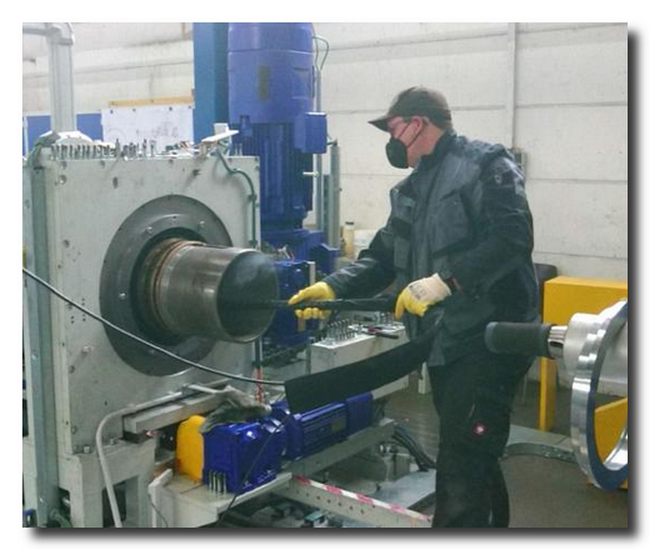
The roller manufacturer has multiple extrusion plants. Tecuma Systems GmbH from Osnabrück supports them in product optimization in the Roller Production division.
The manufacturer was experiencing repeated faults on a new extrusion plant. The large bronze bearing bushings with a max. bearing seat tolerance of 2/100 – 4/100 mm for the central tube, with an outer dimension of 380 mm, are firmly bonded with the outer tube. At times, the central tube got so jammed in the bearing bushing that the 30 kW drive motor was unable to move the central tube. This meant that the bearing bushing needed to be removed so that the plant manufacturer KM could check it and rectify any damage. To enable this, the central tube first had to be dismantled. Tecuma Systems required a way to remove the bonded bearing bushing without destroying it.
Mr. Meyer, Managing Director of Tecuma Systems, had found out from LinkedIn that mycon's new CoolMaster system enabled the non-destructive loosening of bonded joints using a newly developed chilling technology. Afterwards, the central tube and brass bushing could be easily checked, inspected, and overhauled by long-term partner Haberland Zerspanungstechnik GmbH.
Mr. Meyer/Tecuma Systems, short description of company like that given above:
Tecuma Systems GmbH is a globally active company in the field of packaging technology (reel slitters, roller handling) and special applications as well as in technical production consulting for small and medium-sized businesses.
Mr. Meyer/Tecuma Systems
"The new mycon CoolMaster procedure won over everyone involved and saved a significant amount of time. In future, we'll know to use CoolMaster straight away if we need it."

The challenge
When work started, it transpired that the central tube of the plant was so jammed in the bearing bushing that it was not possible to remove the central tube using a press cylinder with a pressing force of up to 10 t, despite major efforts and lots of time spent attempting it. This resulted in a new requirement for the use of CoolMaster. The bonding of the bearing bushing with the outer tube needed to be chilled to around -50°C to make the bonding agent brittle enough for it to no longer effectively bond the parts. Since the bearing bushing was not accessible in this case, CoolMaster had to apply its chilling power through the wall of the central tube and through the 8 mm wall of the bushing over the entire surface of the bond.
The solution
CoolMaster was able to master this challenge in less than three minutes of exposure time. In this short amount of time, the chilling effect made the bonding agent brittle enough to render its bond ineffective. In addition, the outer dimension of the bearing bushing shrank by around 0.50 mm. The bearing bushing could be pressed out effortlessly along with the central tube while the chilling process was still ongoing. The bearing bushing could then be freed from the central tube, too.
Afterwards our long-standing partner Haberland Zerspanungstechnik GmbH was able to easily measure and revise the central tube and the brass bushes.
The material-friendly use of CoolMaster saved a considerable amount of time here for what would have otherwise been a violent, destructive separation.
mycon is working with the University of Paderborn and the Hamm-Lippstadt University of Applied Sciences to further develop this process. The main objective is to facilitate the separation of bonded car body parts. However, the CoolMaster method has potential uses in many industrial sectors, and mycon is open to collaboration in all areas in this regard.
